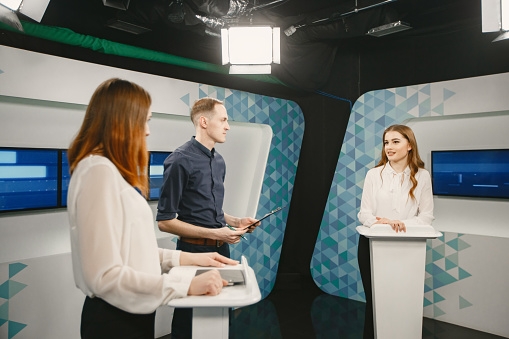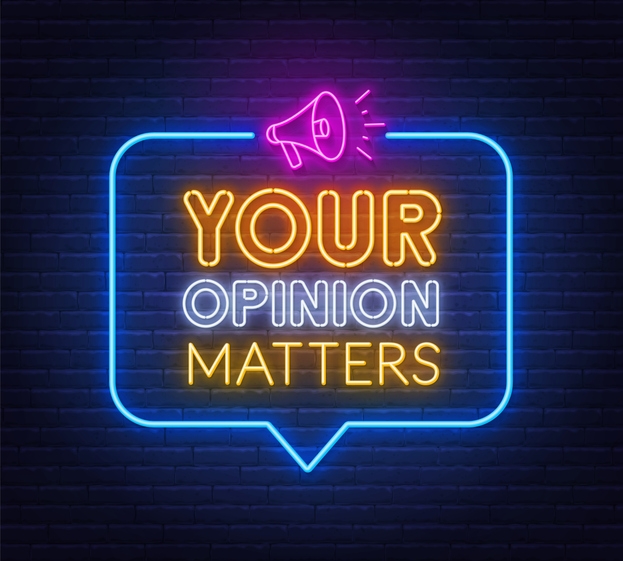20 Creative In-Person Event Engagement Ideas to Energize Your Audience
Discover practical in-person event engagement ideas that elevate attendee experiences. Enhance participation and create memorable moments. Read more!

In today’s event-obsessed world—where virtual events and hybrid event formats dominate—there’s something irreplaceable about being together in person. As an event planner, you have the chance to build genuine connections, spark creativity, and craft moments people will remember long after.
But capturing that magic requires more than a handful of icebreakers. Event engagement is one of the most important component while measuring the impact of any event. You need in-person event engagement ideas that are fun, immersive, and centered around active participation.
20 high-impact strategies that help attendees feel seen, inspired, and part of something special
We’ve included real-world examples, estimated costs, and helpful tips to guide your planning.
1. Surprise & Delight Welcome Moments
Example: As attendees walk into your in-person event, they’re greeted by a string quartet performing modern covers or by actors in full costume welcoming them in the spirit of your event’s theme. It might be a “Futuristic Tech Gala” with LED-clad greeters or a “Carnival of Innovation” featuring jugglers and stilt walkers. These moments immediately spark curiosity and excitement.
Execution: Partner with local artists, street performers, or theatre schools to keep costs manageable and authentic. Alternatively, tap into your own staff to embody the theme with light costumes and props. Complement the physical welcome with a personalized greeting on your mobile event app, complete with their name and schedule highlights.
Cost: $500–$2,500, depending on the number of performers and length of time.
Why It Works: These unexpected, high-touch experiences create memorable moments that help your event stand out. They also encourage guests to share the experience on social media platforms, increasing organic promotion and buzz.
Pro Tip: Send a real-time welcome message or offer a surprise gift code via the event app. It’s a small action that makes a big impact on attendee engagement from the first step inside.
2. Event Spirit Day
Example: Incorporate a playful, themed “Spirit Day” into your event—like a “Throwback Thursday,” “Industry Icon Lookalike Day,” or “Company Colors Day.” These themes help break the ice and infuse fun throughout the event atmosphere.
Execution: Encourage attendees to dress according to the theme and hand out small accessories like pins, masks, wristbands, or custom hats at the registration desk. Use your mobile event app to announce the theme ahead of time and send style inspiration to attendees.
Cost: $3–$8 per attendee depending on the complexity of the accessories provided.
Why It Works: Themed dress-up brings energy and humor into the environment while reinforcing a sense of community. It also enhances audience engagement organically, especially when attendees are eager to show off their creativity on camera.
Pro Tip: Run a “Best Dressed” contest via social media engagement, with entries submitted through your app or an event hashtag. This creates healthy competition, boosts online visibility, and gets more people involved in the event experience.
4. Real-Time Feedback Walls
Example: Set up a vibrant, interactive wall where attendees can share their thoughts throughout the day. This could be a sticky note wall with questions like “What inspired you today?” or a touchscreen kiosk where people type quick takeaways or rate their experience.
Execution: Use large poster boards, colorful markers, or digital survey stations positioned near session exits, lounges, or snack areas. Prompt participants with rotating questions like “What surprised you most?” or “What’s one thing you’ll take back to work?”
Cost: $200–$1,000 depending on whether you go analog or digital.
Why It Works: Real-time feedback captures raw insights in the moment and fosters meaningful participation. It also allows the event organizer to measure event engagement as it happens. These insights are invaluable for planning upcoming events or refining your attendee engagement strategy.
Pro Tip: Share highlights from the wall during closing remarks or feature them live on screens in networking areas to boost engagement and show attendees that their voices matter.

5. Interactive Workshops
Example: Replace lecture-style learning with hands-on, problem-solving sessions. For instance, host a “Design Thinking Challenge” where groups build quick prototypes or a “Brand Sprint” session led by guest speakers.
Execution: Ditch the rows of chairs and set up collaborative tables with materials like sticky notes, markers, canvas boards, or even LEGO bricks. Equip each group with a facilitator to encourage attendee participation and idea-sharing.
Cost: $25–$80 per attendee depending on materials, facilitators, and space setup.
Why It Works: Workshops activate deeper thinking, spark dialogue, and naturally create networking opportunities across smaller groups. It’s a powerful tool for professional development and a proven way to increase attendee engagement, especially when the session has a tangible takeaway.
Pro Tip: Capture photos of teams working and final outcomes. Include these visuals in your post event marketing or recap video to showcase the energy and innovation attendees brought to the table.

6. Live “Idea Garden”
Example: Set up a quiet, plant-filled zone where attendees can pause to reflect and write down ideas, insights, or inspiration on paper tags. These are then clipped onto a “tree” or lattice structure—growing the installation throughout the event.
Execution: Decorate the space with greenery, fairy lights, and benches to create a calming atmosphere. Include prompts like “Share one big idea you’re taking home” or “What would you change in your industry tomorrow?”
Cost: $100–$300 for decor, tags, clips, and signage.
Why It Works: This creative and peaceful corner turns passive attendees into co-creators of your event’s narrative. It also visually represents the collective knowledge shared during the event—a feature that translates well to virtual environments for hybrid or virtual attendees to view online.
Pro Tip: Take high-quality photos of the completed “idea tree” and include them in your event success highlights or post on social media platforms. It adds depth to your post event engagement and gives attendees something personal to look for.
7. Sensory Activation Stations
Example: Offer areas that activate the senses and provide a relaxing retreat between sessions. Think tea-blending bars with calming aromas, neck massage corners with professional therapists, or immersive virtual reality stations for fun escapes.
Execution: Collaborate with local wellness brands or create a “Recharge & Refocus” zone. You can also theme each area to reflect the event’s theme, such as “Zen Zone,” “Taste Lab,” or “Mind Gym.” Use the event app to guide attendees to these areas during scheduled breaks.
Cost: $200–$1,000 depending on what’s offered and how many stations you create.
Why It Works: These stations refresh mental focus and support neurodiverse attendees who may benefit from sensory breaks. For hybrid event environments, consider mirrored wellness content for virtual audiences such as mindfulness videos or a “virtual tea tasting” session.
Pro Tip: Promote these stations ahead of time as part of your pre event engagement to build anticipation. During the event, remind attendees through app push notifications when it’s time to visit.
8. Wearable Tech & Smart Badges
Example: Give attendees smart badges that glow when they’re near someone with shared interests—like similar roles or session choices—or track which booths they’ve visited. It’s a perfect blend of tech and human connection that fuels attendee engagement and creates a gamified journey.
Execution: Use RFID-enabled badges or NFC wristbands programmed with attendee preferences. You can also link them to your event app to allow digital business card exchanges or live leaderboard updates.
Cost: $10–$25 per badge, depending on tech sophistication and quantity.
Why It Works: These badges help engage attendees by enabling seamless networking and participant engagement without the awkward icebreakers. Plus, the tracking data gives event organizers real-time insights to measure event engagement and discover how many attendees visited certain areas.
Pro Tip: After the event, include insights from badge data—like most visited sessions or common interests—in your post event engagement strategies, turning event activity into actionable follow-ups.
9. Pop-Up Networking Pods
Example: Set up compact, cozy pods for 1:1 or small group networking with themed prompts like “Future of Sustainability” or “Tech I Can’t Live Without.” Attendees scan a QR code to join a scheduled conversation or drop in spontaneously.
Execution: Build semi-private seating pods using simple partitions, café tables, and printed signs. Incorporate conversation starter cards and countdown timers. Promote the pods using your mobile event app and include them in the event schedule.
Cost: $300–$800 per pod depending on materials, branding, and furniture.
Why It Works: These spaces are designed to boost attendee engagement by creating focused yet casual networking opportunities—ideal for those who find large mingling areas overwhelming. It’s a powerful tactic in any effective event engagement strategy, especially for in person events where meaningful conversation is key.
Pro Tip: Take photos of active pods and showcase them on social media or in your highlight reel. It helps illustrate your commitment to creating real participant engagement moments.
10. Speed Networking “Spark Sessions”
Example: Arrange fast-paced, 3-minute rounds of introductions among attendees seated in two rotating circles. Include prompts like “One trend you're excited about?” or “What’s your biggest challenge this year?”
Execution: Use a bell, microphone, and a timekeeper to keep the session moving. Add light music in the background to energize the space. Integrate QR scanning to allow contact exchange between participants.
Cost: Minimal—usually just a dedicated space and a facilitator.
Why It Works: This style removes the awkwardness of unstructured networking while ensuring attendees stay engaged and meet a large number of people quickly. It’s an excellent fit for virtual or hybrid events too, when translated into digital breakout rooms.
Pro Tip: Use your event app to send follow-up reminders post-session encouraging attendees to connect again. Include top tips from the session in your post event content as a way to reinforce connections made.
11. Interactive Sessions & Presentations
Example: Replace passive presentations with high-energy sessions that use live polls, Q&A walls, emoji meters, and interactive games to boost audience engagement. For example, a keynote speaker might start with a poll asking “How many attendees here have launched a product this year?” and instantly display the result.
Execution: Integrate tools like Azavista or Slido into your event engagement strategy. Display live results on venue screens to foster group dialogue and track responses in real-time.
Cost: Often included in your event management software or mobile event app.
Why It Works: These dynamic formats ensure attendees stay engaged and provide real-time insights into participant sentiment. It’s particularly effective for hybrid event environments, where both in-person and remote attendees can contribute equally.
Pro Tip: Build a reputation for having the most interactive content by featuring stats and screenshots from your sessions in your post event engagement strategies. Don’t forget to include shout-outs to attendees who contributed top-rated questions or ideas.

12. Pop-Up Flash Activities
Example: Between long sessions, surprise your audience with an unexpected 2-minute group activity—like a quick dance challenge, emoji guessing game, or mindfulness breathing led by a facilitator.
Execution: Use moderators and your venue’s AV team to kick off the activity. Notify attendees via the event app just seconds before it starts to build excitement and participation.
Cost: $200–$1,000 depending on props, music licensing, or hiring talent like a DJ or movement coach.
Why It Works: Flash activities create memorable micro-moments and can help “reset” attendee focus. They work especially well in large formats where it’s easy for attention to fade. These ideas bring all the difference in maintaining energy and increasing event engagement throughout the day.
Pro Tip: Record these moments and use them in your highlight reel or social media posts. These spontaneous, joyful snippets can become viral content and contribute significantly to your event success and online visibility.
13. Recharge & Reflection Lounges
Example: Offer calming, spa-like spaces filled with comfy seating, soft lighting, gentle music, aromatherapy diffusers, and reflection journals. Include prompts like “What’s your biggest takeaway today?” or “What moment surprised you most?”
Execution: Set up enclosed lounge areas with neutral-toned décor, indoor plants, and reflection corners. You can also include headphones with guided meditations or short sound bath sessions for quick resets during the event day.
Cost: $500–$2,000 depending on design, furnishing, and wellness integrations.
Why It Works: Amid a high-energy agenda, these quiet zones allow attendees to slow down, recharge mentally, and engage in introspection. They’re a thoughtful addition to any list of 2 in person event engagement ideas that respect neurodiverse needs and varying social energy levels.
Pro Tip: Encourage attendees to jot down their thoughts and drop them into a “group journal” box. Later, feature the most inspiring reflections as part of your event’s closing celebration or content recap.
14. Real-Time Social Challenges
Example: Spark excitement by running daily challenges like “Best Breakout Pose,” “Creative Note-Taking,” or “Most Unique Lanyard.” Attendees post with your event hashtag to participate.
Execution: Announce challenges via push notifications in your event app or on your social media. Display submissions in a rotating feed on a live social media wall in common areas like the registration zone or lounge.
Cost: Low to minimal—typically $50–$200/day for prizes like gift cards, branded swag, or premium lounge access.
Why It Works: These challenges amplify virtual engagement even in a physical setting. They help keep attendees engaged, extend your event’s visibility beyond the venue, and encourage people to network around fun, shared moments.
Pro Tip: Create a final “Social Star” award during your closing session to recognize the most creative or consistent participants.
15. Personalized Session Recommendations
Example: Use insights from a pre event survey to automatically suggest which sessions, speakers, or booths attendees should visit based on their goals and interests.
Execution: Set up smart logic in your event platform or app that analyzes survey results and builds a tailored agenda. Push these suggestions directly to the attendee's dashboard or inbox before the event.
Cost: Usually included in modern event platforms; setup time and survey strategy are the main inputs.
Why It Works: This feels like a personal concierge service and instantly makes inviting attendees feel more intentional. It increases satisfaction, improves session attendance rates, and helps attendees stay engaged throughout the day.
Pro Tip: Award digital badges for attendees who complete their “Top 3 Custom Picks” to reinforce behavior and drive app engagement.
16. VR Experience Booths
Example: Let attendees explore virtual environments with VR headsets, such as walking through a futuristic showroom, touring a factory floor, or experiencing an immersive brand story.
Execution: Partner with content creators or brands to set up a dedicated VR zone. Include headsets, sanitization stations, and facilitators to guide participants through the experience.
Cost: $2,000–$7,000 depending on the number of booths, type of content, and licensing.
Why It Works: These booths bridge the gap between virtual settings and in person event engagement ideas. They provide novelty, spark curiosity, and allow for virtual engagement even during physical events—perfect for showcasing products or stories that can't be experienced on-site.
Pro Tip: Track engagement by recording headset usage stats. Later, include the most popular VR content in your event highlights to demonstrate innovation.
17. Gamified Passport & Mission Cards
Example: Distribute digital or physical “passport” booklets with mini-missions like “Visit 3 sponsor booths,” “Meet someone from another country,” or “Attend one hands-on session.” As they complete tasks, attendees earn points or collect stamps.
Execution: Incorporate the mission game into your event app or provide printed cards with stamping stations. Offer small prizes at different achievement levels, and a grand prize for the top point scorer.
Cost: $2–$7 per participant depending on the format and prize tiering.
Why It Works: Structured exploration keeps attendees engaged and moving with purpose. It’s a fantastic way to drive booth traffic, encourage conversation, and gamify networking—while supporting your larger event engagement strategy.
Pro Tip: Showcase leaderboard results on-screen throughout the day and announce winners during the closing remarks to create a memorable moment.
18. Attendee Shout-Outs & Spotlights
Example: Celebrate standout moments like a first-time attendee asking a brave question, a speaker quoting an audience member, or the best team selfie of the day. Use the app or stage to publicly appreciate attendees.
Execution: Ask moderators and hosts to flag great moments, or run polls to let the audience vote on shout-outs. Announce winners during transitions or keynotes.
Cost: Minimal—mainly effort from moderators and access to your event app or AV team.
Why It Works: Recognizing attendees builds emotional connection and drives meaningful participation. It shows you're watching, listening, and valuing contributions from the whole crowd—not just speakers or sponsors.
Pro Tip: Use this tactic in both in-person and virtual settings—you can spotlight online engagement just as easily as you can in the room.
19. Real-Time Insights & Dashboards
Example: Display live data like top sessions, audience poll results, heat maps of foot traffic, and even social sentiment scores on big screens across the venue.
Execution: Use your event management software to pull live data and visualize it on dashboards near lounges, help desks, or sponsor booths.
Cost: Often included in comprehensive platforms like Azavista; some setups may need AV support.
Why It Works: Transparency and visibility into attendee behavior encourage deeper participation. It also helps organizers measure event engagement instantly and adapt in real time to what’s resonating most.
Pro Tip: Run micro-contests tied to data—like “Most attended sponsor booth wins coffee for every visitor”—to inject excitement.

20. Memory Wall & Closing Highlights
Example: Set up a large wall or digital board at the exit where attendees can add favorite moments, funny quotes, pictures, or stickers representing how they felt during the event.
Execution: Offer printed photos, sticky notes, digital uploads, and emoji stickers. Use touchscreen displays or polaroid cameras to keep things interactive.
Cost: $300–$1,500 depending on materials and staffing.
Why It Works: It closes the loop with a shared emotional moment. A well-executed memory wall connects back to interactive art installations and becomes a visual snapshot of your event’s energy and voice.
Pro Tip: Turn the wall into a photobooth backdrop for final group shots, and use the full collage as a header image for your post event communications.
Bonus: Post Event Engagement & Feedback
- Launch a post event survey to gather valuable feedback (include 1–2 questions on favorite creative moment).
- Share a recap video that share event highlights and teaser content for future events.
- Offer early bird pricing or VIP invites for your next event via a thank-you email pop-up.
Final Thoughts
These in-person event engagement ideas aren’t just gimmicks—they’re powerful tools to build community, boost energy, and make your event truly unforgettable. With creative planning and smart use of technology like mobile event apps and event management software, you’ll deliver a dynamic attendee experience that resonates long after.
Ready to bring these ideas to life? Explore Azavista’s all-in-one platform that supports everything from pre event engagement to real-time data and post event engagement—so your event is always one step ahead.
More Event Marketing and Promotion












